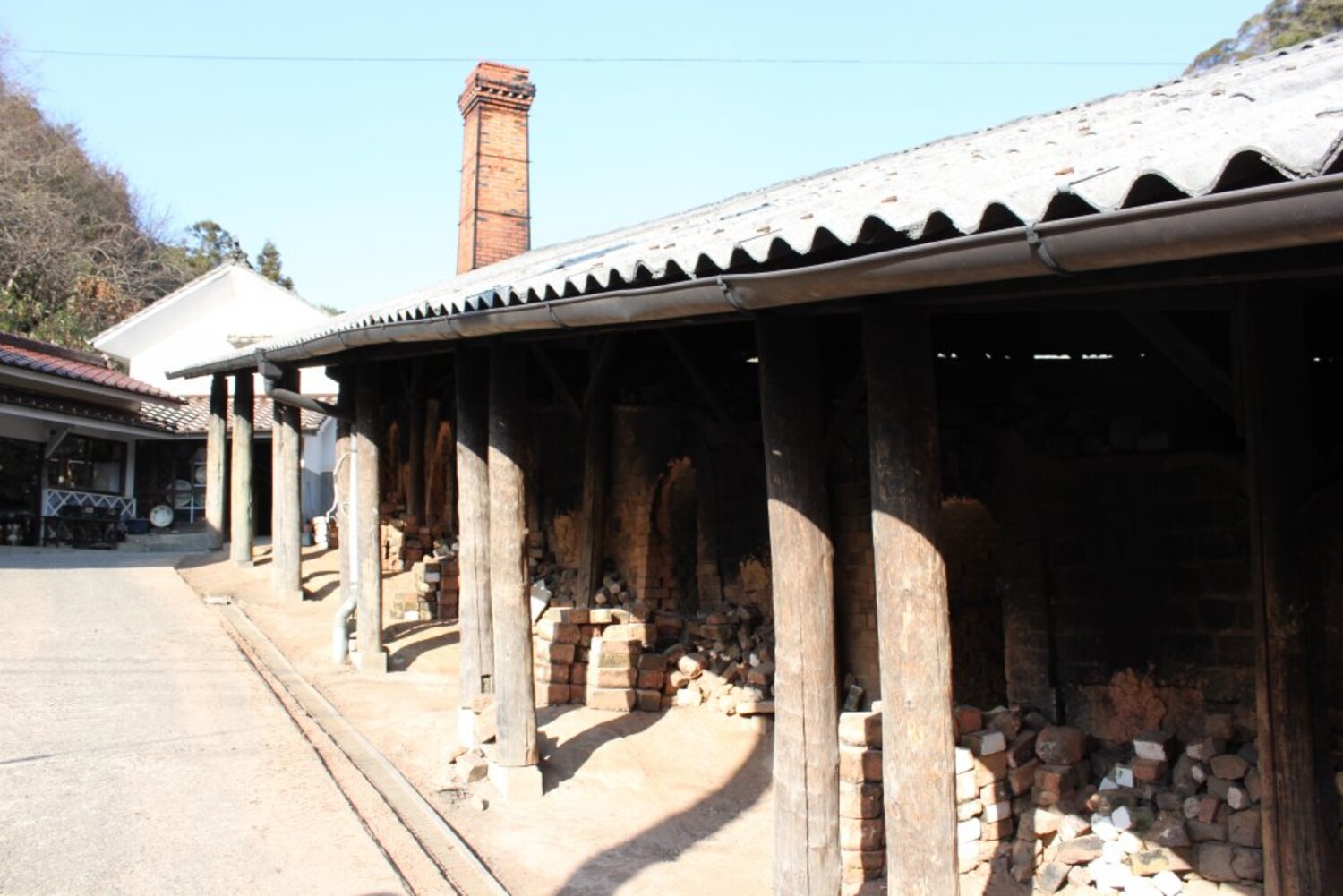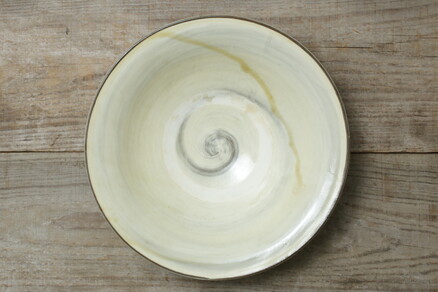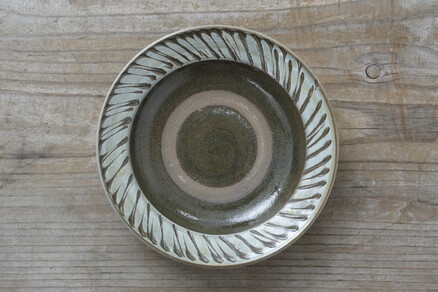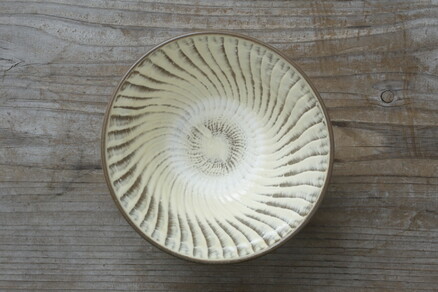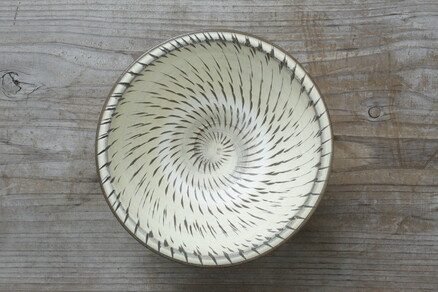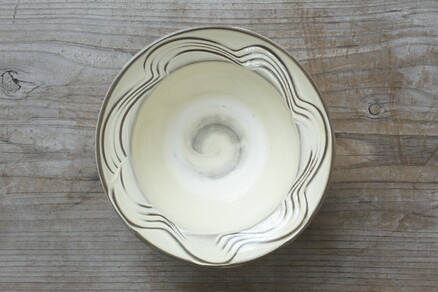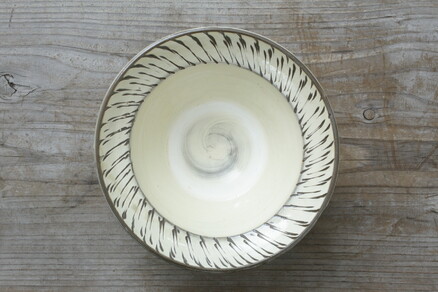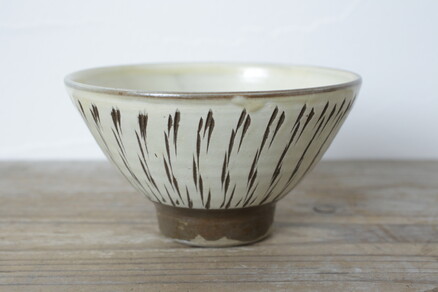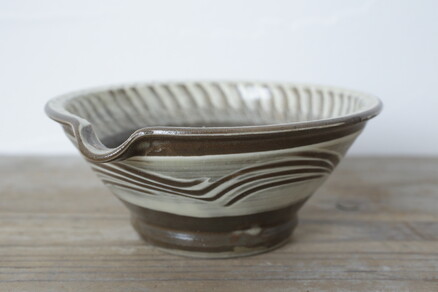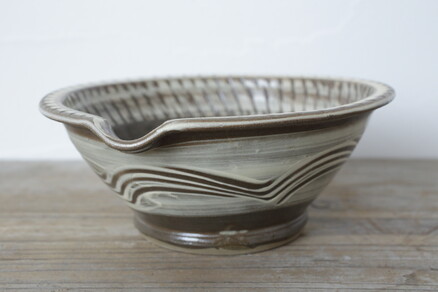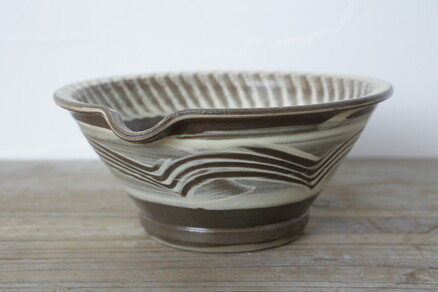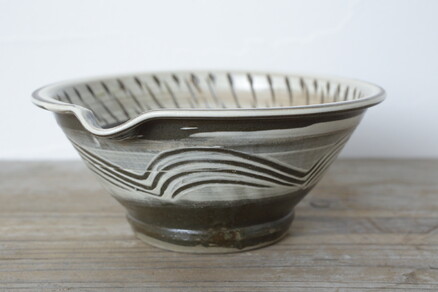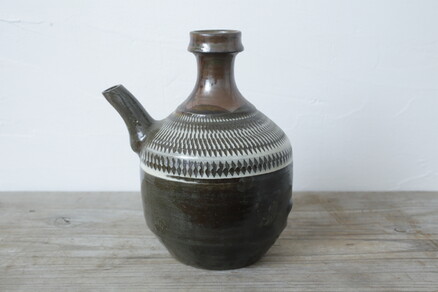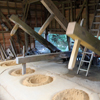
ONTA

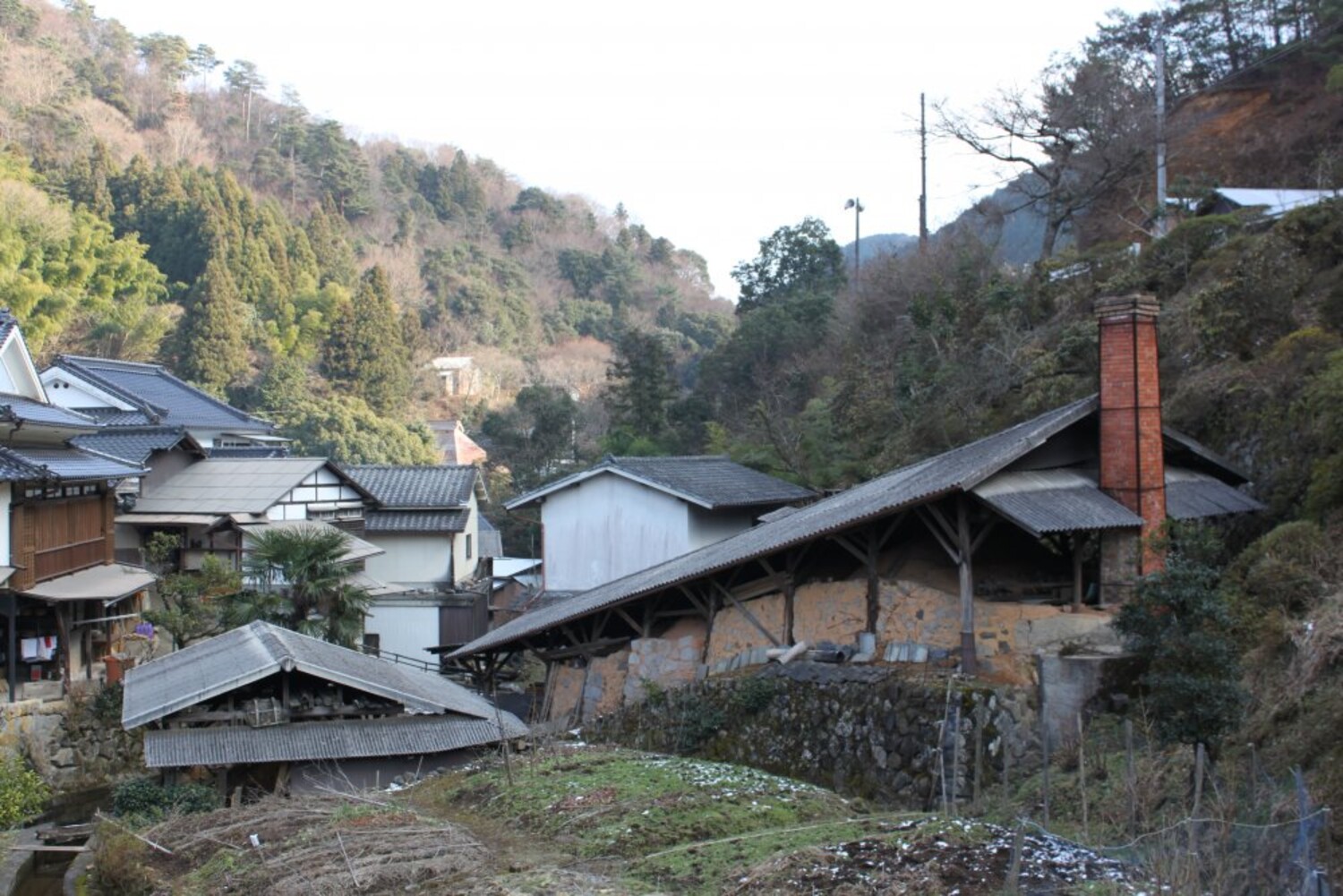
Ontayaki has a history of over 300 years, starting in 1705 in the middle of the Edo period in Sarayama, Hita City, Oita Prefecture. The hereditary system of inheritance from one child to another has been maintained, and techniques and traditions unchanged from the past have been passed down. In 1995, it was designated as an organization that preserves important intangible cultural properties.
Onta Sarayama has a laid-back atmosphere that will make anyone feel at ease, with the sound of a mortar hitting the ground and the murmur of a river echoing through the air. The 10 potteries still do everything by hand, from preparing the soil to unloading the kilns. After collecting soil from the mountains of surrounding villages and dividing it evenly among the 10 potteries, they dry it for about 10 days and use only a mortar. It will take two weeks to prepare the soil. After that, it is said that it takes two months to make pottery clay for one kiln, after going through various steps. Since it takes so much time and the soil is divided equally between each kiln, mass production is not possible.
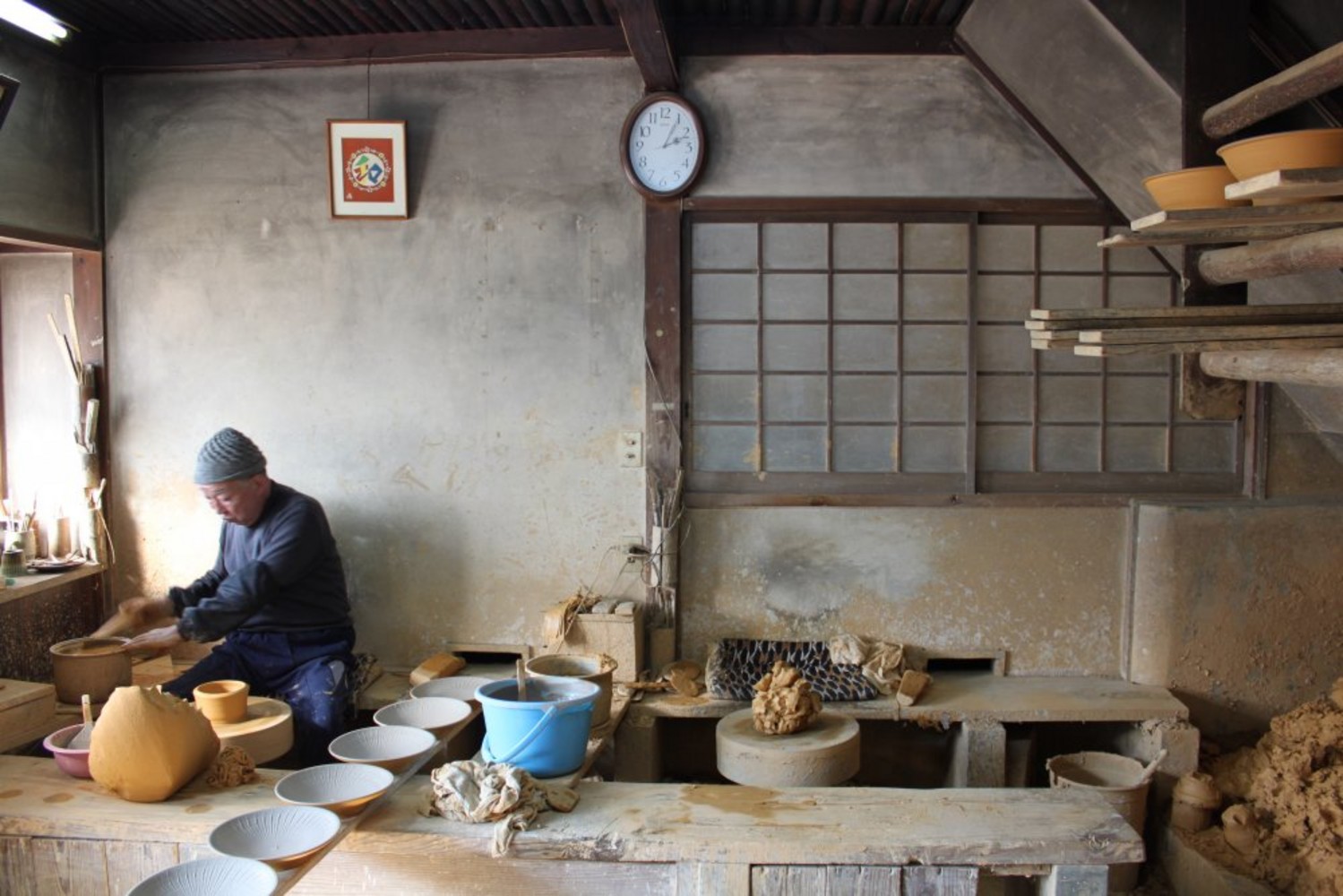
Mingei is said to be something made from things that are originally found in the area. At Onta Sarayama, it is said that they use only local materials, including the soil and ash used as raw materials for the glaze. Ontayaki pottery has changed little by little in response to changes in lifestyle, while preserving the traditions that should be preserved.
The photo is of Shigeki Sakamoto, who is now retired. He is said to be one of Onta's finest potters, but he retired when his grandson, So Sakamoto, returned to Onta from his training. Mr.Shigeki's son, Takumi Sakamoto, says, ``There are only two potter's wheels.'' Actually,we were drawn to Ontayaki after seeing Mr.Shigeki 's wor, so we were very disappointed to see Mr.Shigeki retire, but for over 300 years, the Onta tradition has been passed down from father to son, and then back to his son. That was the moment we realized that this tradition had been passed down to us.
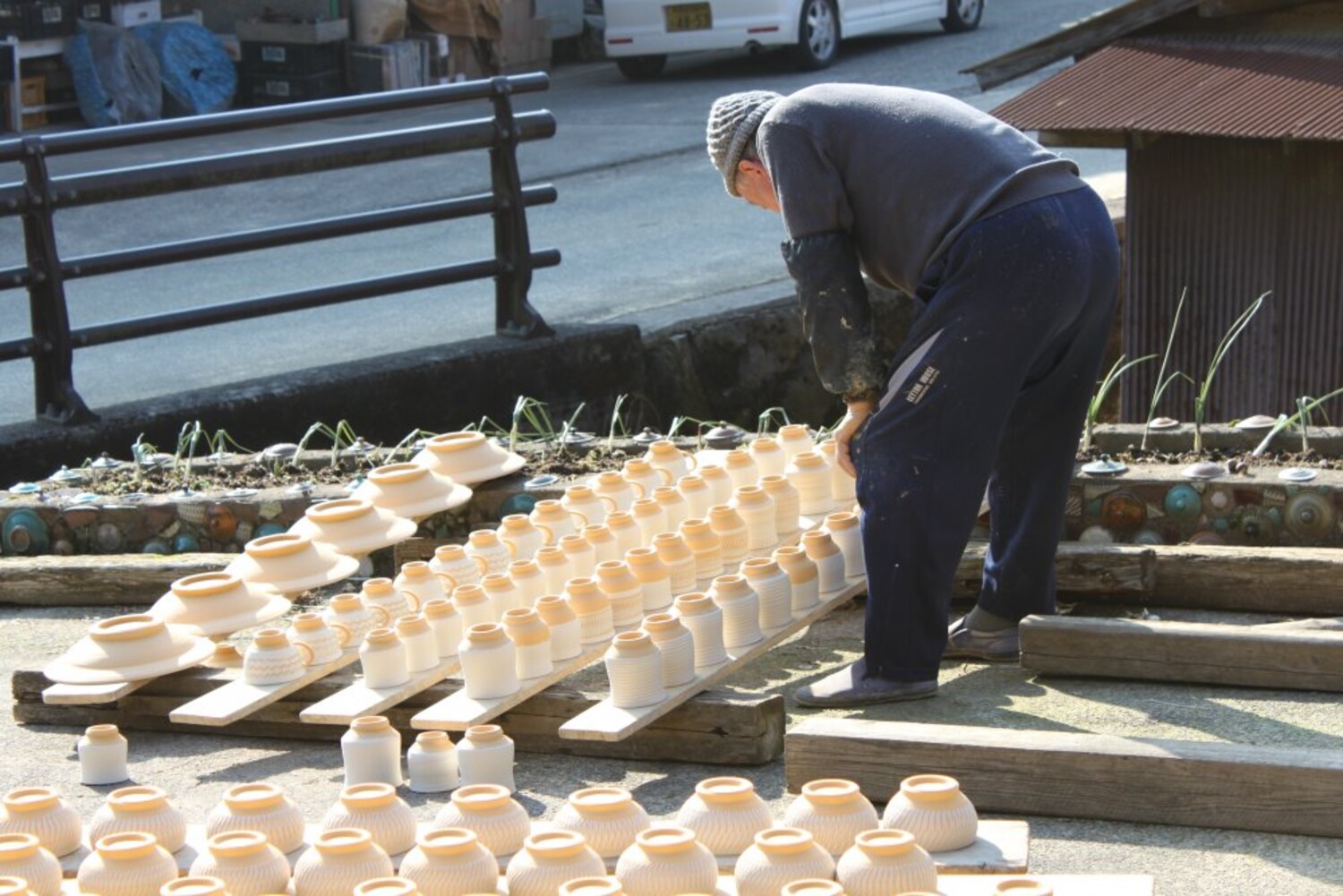
One of the representative techniques for Ontayaki is "Tobikanna" , which involves kicking the potter's wheel and applying a plane to the surface of the items."Hakeme" is a technique in which a pattern is created by rolling a potter's wheel on a potter's wheel and applying makeup soil to the brushmarks to create a pattern."Kushi-daki" is the process of drawing wavy curves using a comb-like tool. "Finger drawing" involves drawing zigzag curves with your fingertips before the makeup soil dries. "Uchikake" is the process of pouring glaze or makeup clay into a ladle. "Nagashigake" is a technique in which glaze or makeup soil is placed in a dropper and dripped from a certain height.
Each pottery uses these traditional techniques to create their own pottery, but even the same flying plane plates have different expressions depending on the pottery. There may be a difference in the creator's personality, and there may also be a difference in age. Some potteries make pottery that has a rustic, strong, and indigenous feel, while others make pottery that has the impression of a slightly more sophisticated modern pottery.
Soba Chaya, the only restaurant in Onta Sarayama where banquets are often held, uses a lot of Ontayaki, and you can enjoy the beauty and generosity of Ontayaki, which is said to be a folk pottery. A folk pottery festival is also held in Onta, so please check the date and come and see it.
Terms & Conditions
Newsletter
Sign up for our newsletter:
